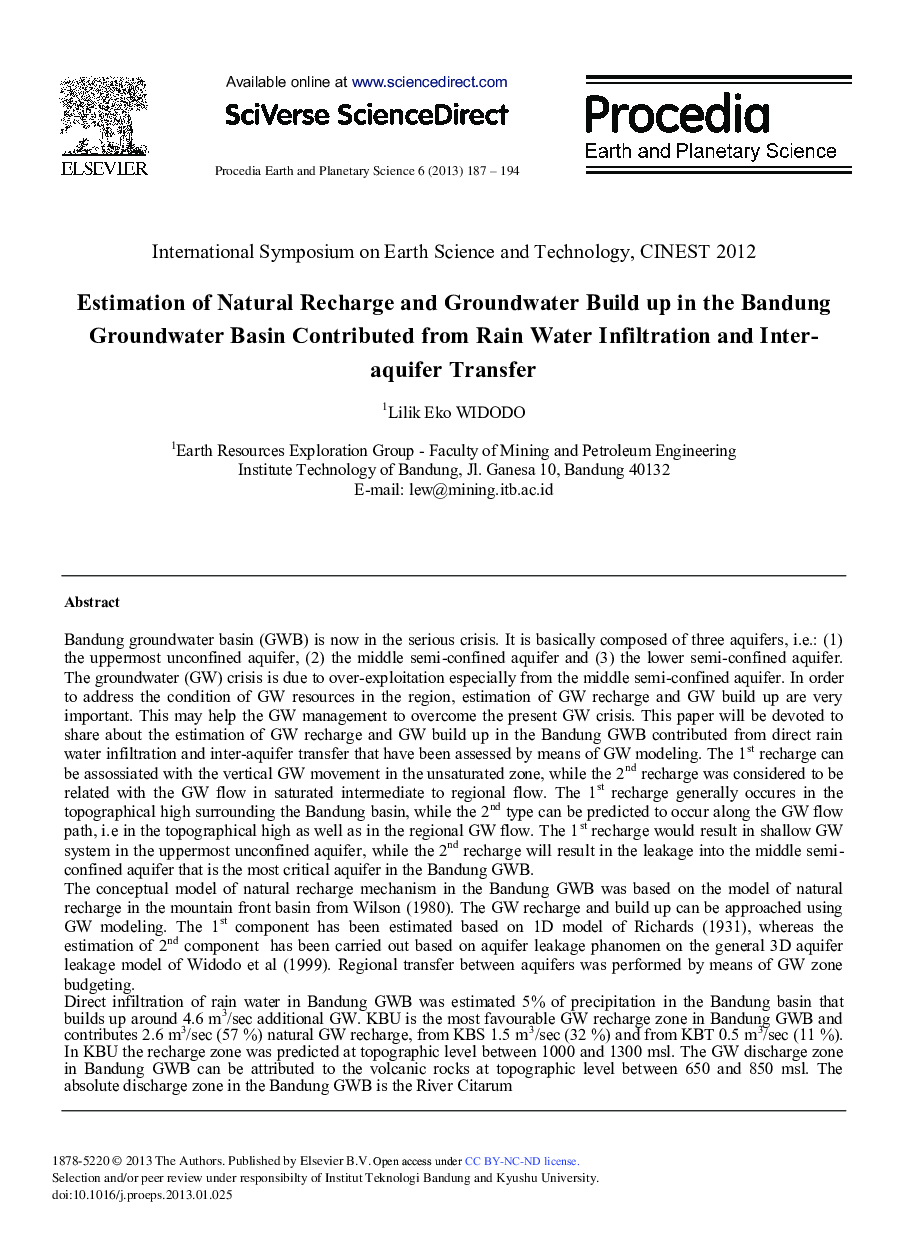| کد مقاله | کد نشریه | سال انتشار | مقاله انگلیسی | نسخه تمام متن |
|---|---|---|---|---|
| 4675346 | 1634398 | 2013 | 8 صفحه PDF | دانلود رایگان |
Bandung groundwater basin (GWB) is now in the serious crisis. It is basically composed of three aquifers, i.e.: (1) the uppermost unconfined aquifer, (2) the middle semi-confined aquifer and (3) the lower semi-confined aquifer. The groundwater (GW) crisis is due to over-exploitation especially from the middle semi-confined aquifer. In order to address the condition of GW resources in the region, estimation of GW recharge and GW build up are very important. This may help the GW management to overcome the present GW crisis. This paper will be devoted to share about the estimation of GW recharge and GW build up in the Bandung GWB contributed from direct rain water infiltration and inter-aquifer transfer that have been assessed by means of GW modeling. The 1st recharge can be assossiated with the vertical GW movement in the unsaturated zone, while the 2nd recharge was considered to be related with the GW flow in saturated intermediate to regional flow. The 1st recharge generally occures in the topographical high surrounding the Bandung basin, while the 2nd type can be predicted to occur along the GW flow path, i.e in the topographical high as well as in the regional GW flow. The 1st recharge would result in shallow GW system in the uppermost unconfined aquifer, while the 2nd recharge will result in the leakage into the middle semi- confined aquifer that is the most critical aquifer in the Bandung GWB.The conceptual model of natural recharge mechanism in the Bandung GWB was based on the model of natural recharge in the mountain front basin from Wilson (1980). The GW recharge and build up can be approached using GW modeling. The 1st component has been estimated based on 1D model of Richards (1931), whereas the estimation of 2nd component has been carried out based on aquifer leakage phanomen on the general 3D aquifer leakage model of Widodo et al (1999). Regional transfer between aquifers was performed by means of GW zone budgeting.Direct infiltration of rain water in Bandung GWB was estimated 5% of precipitation in the Bandung basin that builds up around 4.6 m3/sec additional GW. KBU is the most favourable GW recharge zone in Bandung GWB and contributes 2.6 m3/sec (57%) natural GW recharge, from KBS 1.5 m3/sec (32%) and from KBT 0.5 m3/sec (11%). In KBU the recharge zone was predicted at topographic level between 1000 and 1300 msl. The GW discharge zone in Bandung GWB can be attributed to the volcanic rocks at topographic level between 650 and 850 msl. The absolute discharge zone in the Bandung GWB is the River Citarum.
Journal: Procedia Earth and Planetary Science - Volume 6, 2013, Pages 187-194
